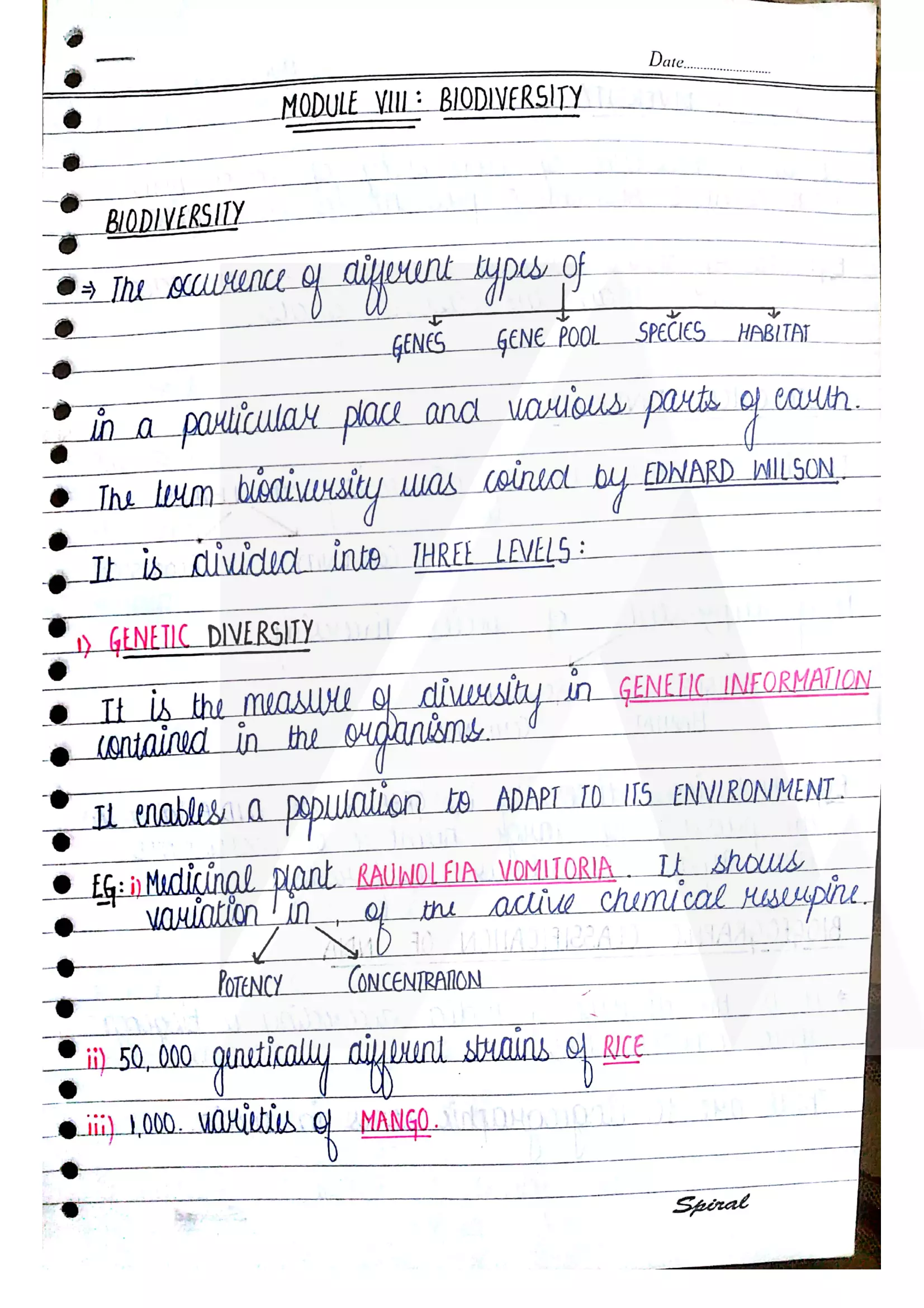Biodiversity and its Conservation BCA Notes
Biodiversity and its Conservation BCA Notes: This article contains BCA Environmental Studies Subject Unit 4 Biodiversity and its Conservation BCA Notes. this is very helpful for BCA students. please share this article with your all friends and all groups. and all notes are available on this website.
Quick Links:
Biodiversity and its conservation are critical topics in environmental science and play a significant role in shaping policies and practices aimed at preserving Earth’s natural heritage. For Bachelor of Computer Applications (BCA) students, understanding biodiversity and its conservation is essential as it underscores the intersection of technology and environmental stewardship. Here’s an exploration of these concepts within the context of a BCA program:
Understanding Biodiversity
Biodiversity refers to the variety of life on Earth, including genetic diversity within species, diversity between species, and diversity of ecosystems. It encompasses:
- Species Diversity:
- The variety of different species in a given area, ranging from microorganisms to plants, animals, and fungi.
- High species diversity contributes to ecosystem stability and resilience against environmental changes.
- Genetic Diversity:
- The variation in genes within a species, which enables adaptation to changing environmental conditions and enhances species survival.
- Genetic diversity is crucial for maintaining healthy populations and mitigating the impacts of diseases and climate change.
- Ecosystem Diversity:
- The variety of habitats, ecosystems, and ecological processes within a region.
- Different ecosystems provide essential services such as clean air and water, soil fertility, and climate regulation.
Importance of Biodiversity Conservation
Biodiversity conservation aims to protect and sustainably manage Earth’s biodiversity to ensure its long-term viability and the well-being of human societies. Key reasons for conservation include:
- Ecosystem Services: Biodiverse ecosystems provide vital services like pollination, nutrient cycling, flood regulation, and carbon sequestration, which are essential for human survival and well-being.
- Cultural and Aesthetic Value: Biodiversity enriches cultures, traditions, and aesthetics through recreational activities like ecotourism and cultural practices tied to natural landscapes.
- Ethical and Intrinsic Value: Many people believe that biodiversity has intrinsic value and the right to exist independent of its usefulness to humans.
Role of Technology in Biodiversity Conservation
Technology plays a crucial role in biodiversity conservation by enhancing monitoring, research, management, and public engagement efforts. In the context of BCA, technological applications include:
- Remote Sensing and GIS:
- Using satellite imagery and Geographic Information Systems (GIS) to map biodiversity hotspots, monitor habitat changes, and assess conservation priorities.
- GIS helps in spatial analysis of species distributions, land use patterns, and connectivity of habitats.
- Data Analytics and Big Data:
- Analyzing large datasets (Big Data) to identify trends in species populations, track illegal wildlife trade, and predict impacts of climate change on biodiversity.
- Data-driven approaches aid in decision-making for prioritizing conservation actions and allocating resources effectively.
- Citizen Science and Mobile Apps:
- Engaging the public in biodiversity monitoring through citizen science initiatives and mobile apps that allow users to report species sightings and contribute to biodiversity databases.
- Crowdsourcing data enhances data collection efforts and promotes public awareness and involvement in conservation efforts.
- Environmental DNA (eDNA):
- Using eDNA techniques to detect and monitor species presence in aquatic and terrestrial environments, providing non-invasive methods for biodiversity assessment.
Conservation Strategies and Practices
BCA students studying biodiversity conservation may explore various strategies and practices:
- Protected Areas: Establishing and managing national parks, wildlife reserves, and marine protected areas to conserve critical habitats and species.
- Habitat Restoration: Restoring degraded ecosystems through reforestation, wetland restoration, and sustainable land management practices to enhance biodiversity.
- Species Conservation: Implementing species recovery plans, captive breeding programs, and measures to combat wildlife trafficking and poaching.
- Sustainable Development: Integrating biodiversity conservation into sustainable development goals, promoting eco-friendly practices in agriculture, forestry, and fisheries.
Career Opportunities in Biodiversity Informatics
BCA graduates interested in biodiversity conservation can pursue careers that integrate technology and environmental stewardship:
- Biodiversity Data Analyst: Analyzing biodiversity datasets, modeling species distributions, and assessing conservation effectiveness.
- GIS Specialist: Using GIS for spatial analysis and mapping biodiversity data, supporting habitat conservation and land use planning.
- Conservation Technologist: Developing software tools and applications for biodiversity monitoring, citizen science, and environmental education.
- Policy Analyst: Providing technical expertise in biodiversity conservation policy development, implementation, and evaluation.
Biodiversity and its Conservation BCA Notes

|
|
|||